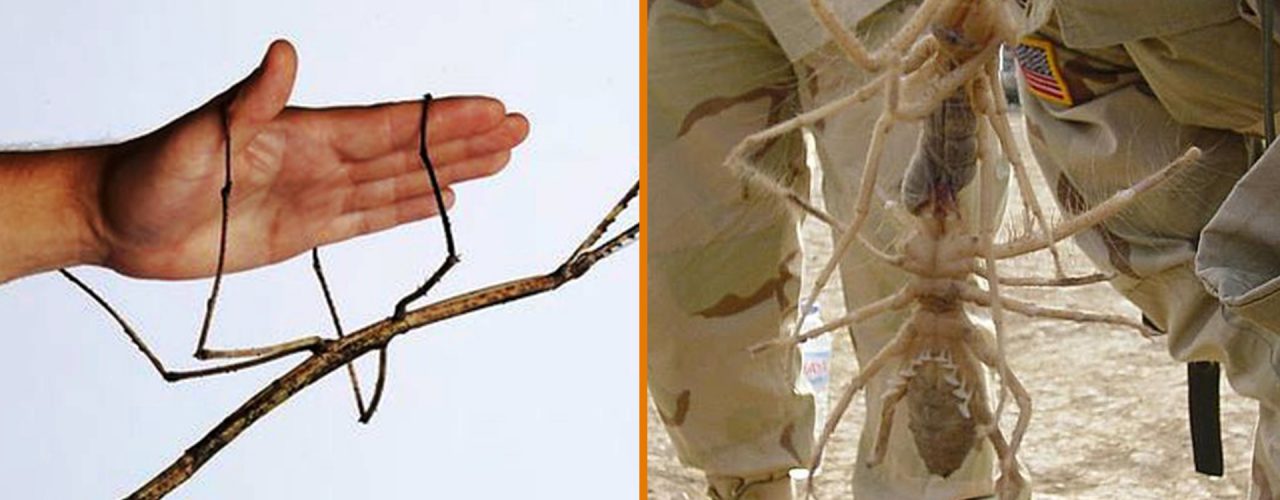It’s a strange coincidence that aliens in movies tend to mimic the appearances of actual animals that exist on our world–particularly insects. From the arachnids of starship troopers, the head crabs of half-life, and even the face huggers of Alien, I would be surprised if these imaginary aliens weren’t directly inspired off of our earthly ground dwelling bugs.
Hence, it got me thinking of the great many insects out there that may be enough to inspire such great works of science fiction, particularly ones which are just as terrifying and weird looking as the horrors of the movies that we love and watch. The first on our list is a doozy..
7 . Tarantula Hawk (Pompilidae)
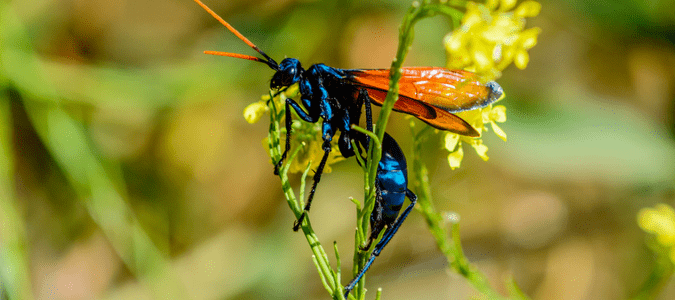
Don’t let the name fool you, as this first creature’s appearance mimics neither of the things that it is called. Unsurprisingly though, is that the insect in question’s number one source of food is the former of its 2-named alias; being that of Tarantulas. That’s right, this wasp (which by the way only grows up to a measly 5cm long) hunts down tarantulas which I’m sure you’re all very familiar with as being quite a sizeable and formidable opponent. It doesn’t stop it though from trying its luck at taking them down–as its paralyzing attack is enough to immobilize a fully adult tarantula and carry it over to its nest for a nice dinner meal.
What’s more is that its sting is known to be extremely painful, ranking only second to the bullet ant on the schmidt pain index.
6. Hercules Beetle (Dynastes hercules)
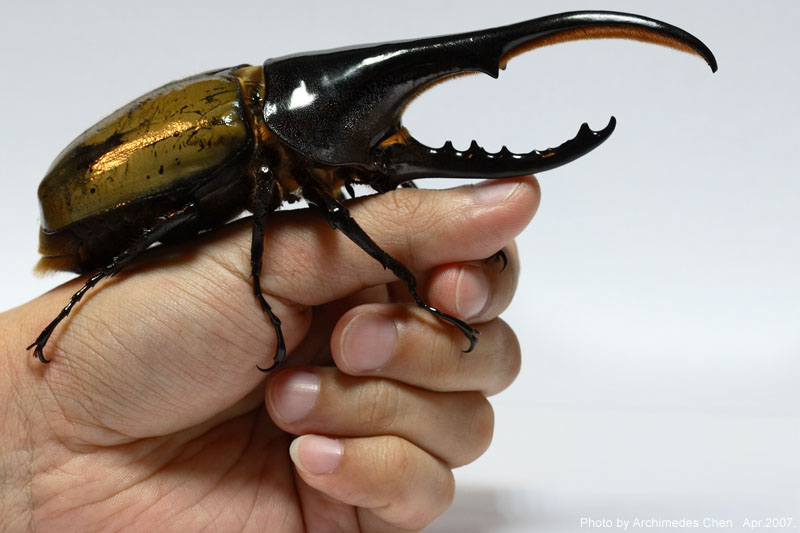
Look at the size of this unit! The Hercules beetle sports a rather fitting title for itself considering its whopping bigness and length. A fully grown male can get up to 6.5 inches in length and weigh up to 85 grams–but what’s even more crazy is its sheer strength. The beetle is able to lift weight that is 850 times its own weight; so a beetle which weighs the aforementioned size can lift items that are nearly 72 kilos in size. That kind of weight is heavier than me!
5. Thorn Bug (Umbonia crassicornis)
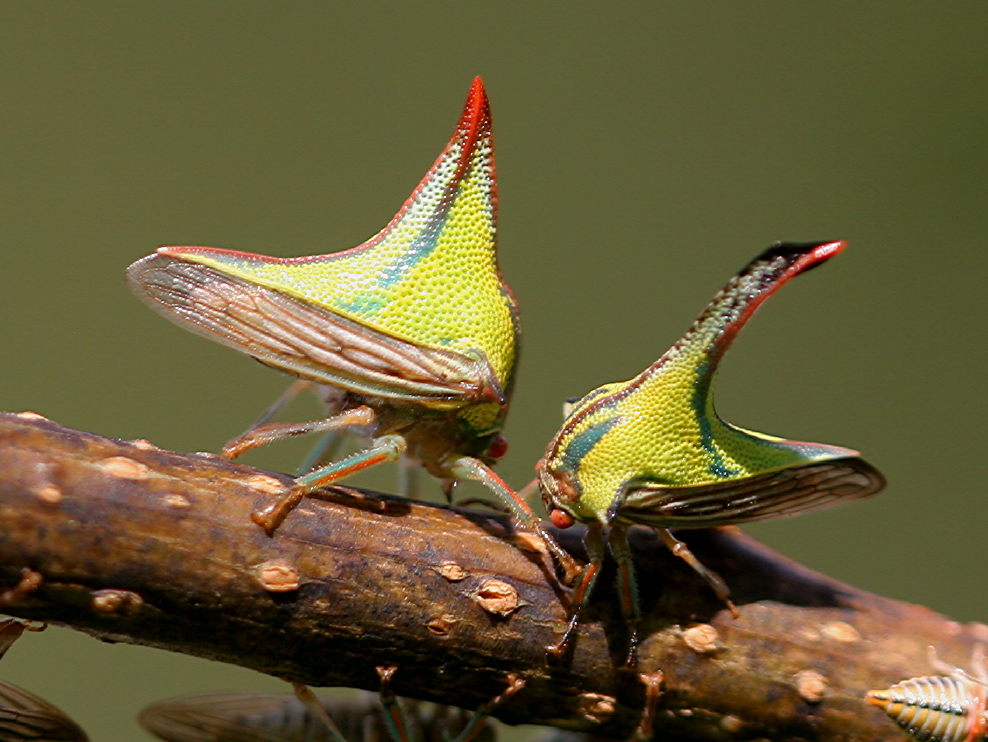
It honestly couldn’t get any more extraterrestrial than this (watch me get proven wrong)–the thorn bug gets its name from its rather peculiar body feature; being that of a large cone-like thorn on the back of its body. At first sight, it gives the impression of a small head with arms and legs wearing an oddly shaped bicycle helmet, but don’t let that fool you. It’s official classification puts it much closer in relation to other green bugs like the Cicada and Grasshopper; and is rather docile in nature. The cone on its head acts as a deterrent for its natural predators like birds and other insects; camouflaging itself to look like a spiky thorn commonly seen on trees and plants–its natural habitat and feeding grounds. They are practically harmless in nature; so fear not as these tree dwellers will do no harm to you and I. Unlike the next entry in our list..
4. Camel Spiders (Solifugae)
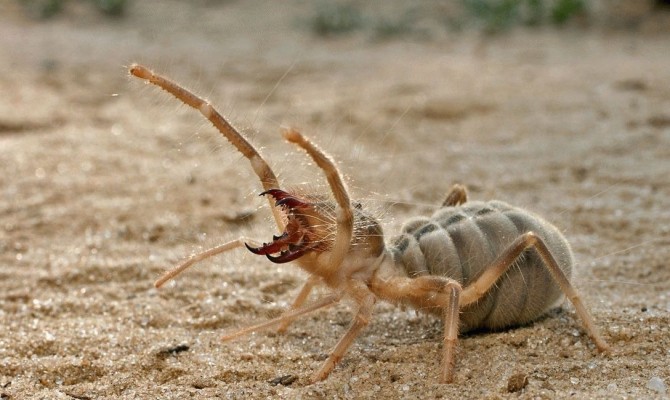
Of course, I had to be proven wrong with yet another insect that looks like the stuff of nightmares. And what is an insect countdown without the mention of an arachnid at least once! The camel spider, which is neither part camel nor part spider has its name based on the common sighting of them near camels. This stems from the urban legend that camel spiders would kill these unlucky humped desert inhabitants by entering their stomach and laying eggs inside of them (yikes) which in essence seems very similar to the face huggers seen in the movie Alien (they even kind of look like them too). The real, more detailed story is that they would in fact use them for shade in the hot desert sun–and if you’re interested to know: they are more than willing to use you for it as well!
3. Giant Cockroach (Megaloblata Longpennis)
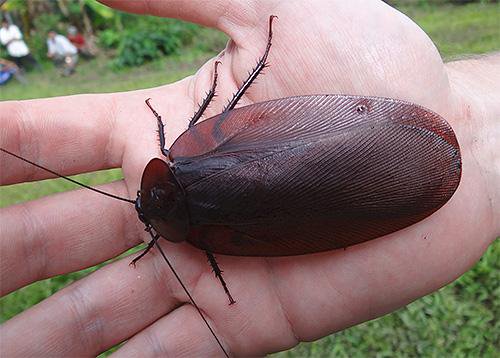
Yes this entry is a cockroach, and yes it has an awfully fitting name. The Megaloblata Longpennis–long penis for short (just kidding; don’t quote us on that) is known as the species of cockroaches that hold the title as longest cockroach in the world! Now it wouldn’t take a genius to figure that out based on the name, but this particular creepy crawly is known for its rather impressive wingspan, being that of 18.5 cm in total length as a fully grown adult; thats nearly 7 inches! What’s more is that the cockroach is no weak contender in its overall size (not including wingspan), ranking in with 4 inches in length–truly a scary and eye catching sight to see in real life. These metrics in mind, one ponders how the entomologist who discovered and researched this bug got to naming him; let alone measuring their bodily characteristics. But based on the name, I think I’ve got some clue as to how it went down.
2. Suicide Ants (Colobopsis Explodens)
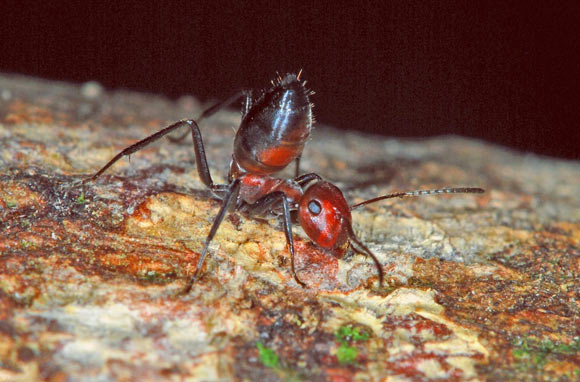
With a name that ends in explodens it kind of becomes easy to tell why they were featured on this list. This weird species of ant has quite possibly one of the most badass defense mechanisms I have ever seen in an insect; which is its ability to literally explode into a bloody mess of toxic yellow goo–exterminating any poor foes within the kill zone. The aforementioned yellow goo is also another official pseudonym for the ant species, and is named for that based on the rather messy aftermath it leaves behind during its short lived battles with predators. These kinds of ants are found in the tropical rainforests of Southeast Asia, and have colonies that number in the thousands; with worker ants consisting of a great many of the population. The very same ones that deploy this self destructive effect!
1. Stick Bug (Phryganistria chinensis)

Last on our list is a rather unbelievable and jaw dropping find; at least to me when I first found out about it. Phryganistria chinensis, otherwise known as the stick bug, walking stick, or just stick insect comes from the insect family Phasmatodea, which are known for their peculiar characteristic of being 1-to-1 in appearance with naturally occurring vegetation such as leaves or bark. This particular species of stick bug is known most famously for its extremely sizeable length, having managed to reach the world record for longest insect ever discovered; coming in at nearly 68.4 cm long. And what’s more is how lifelike it appears to be in comparison with an actual stick; something that does it well in nature when faced up against other nasty predator bugs and animals looking for a quick meal. It is truly a sight to behold, and should one get the opportunity to come across it in real life, take a moment to appreciate its beauty; as it very rare to even spot them in the first place seeing that they can blend so seamlessly into the environment!
For more buggy content, check out the video our dailyWOW media team did on a German insect collector with over 700 different varieties of bugs–in his very own home!
Also, feel free to check out our other video on real insect sushi in Japan! Yum Yum!
Author: Gerald Wan Anyi

